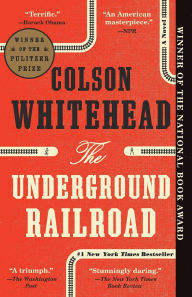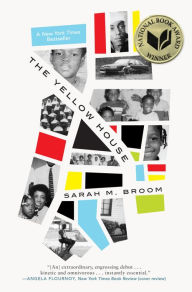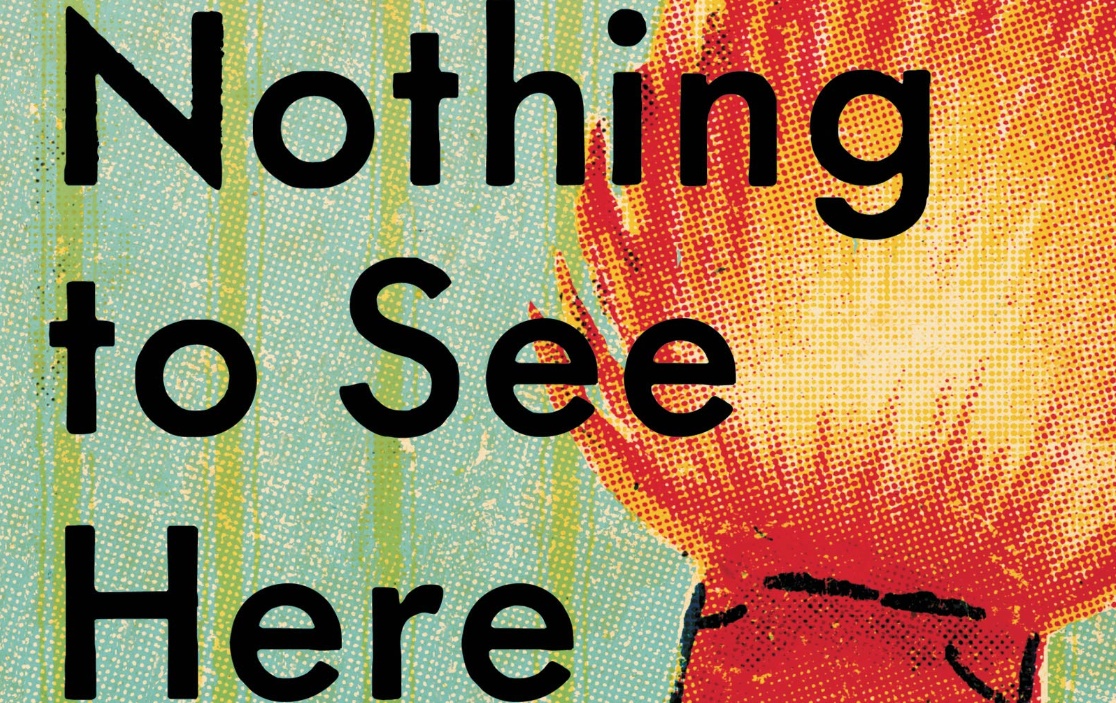Whitehead’s most recent works, The Underground Railroad (winner of both the 2016 National Book Award and the 2017 Pulitzer Prize) and The Nickel Boys, his new, seventh novel, have emerged during a political era when some readers have required reminding about America’s violent racial history. When Americans have activated totalizing political ideologies or maintained repressive social arrangements, they’ve done so in order to exact vicious forms of violence on people of color. Marginalizing and erasing non-white ethnic Americans has been the goal. In his fiction, not only are Whitehead’s black protagonists often seeking refuge and liberation from such violence, they also seek to claim their birthrights: the full benefits and equal protections of United States citizenship.
At this moment in 2019, The Nickel Boys is an especially necessary novel. Here, Whitehead writes about black American children experiencing and surviving sustained injustice. The cost of survival is high: but even more expensive, Whitehead suggests, is the cost for betraying American moral and political ideals. And, as his fiction details, that degradation resounds across generations, dehumanizing perpetrators and victimized alike.
When Whitehead introduces the protagonist of The Nickel Boys, it’s as though we’re entering a Brothers Grimm folktale: “In New York City there lived a Nickel Boy who went by the name of Elwood Curtis.” Though it seems to hearken to a past time, this once-upon-a-time opening leads to an illuminated present: The year is 2014, and Elwood has just seen the vengeful return of his repressed adolescence.
The Nickel Boys is the Barnes & Noble Book Club selection for July 2019. Learn more here.
Watching TV in his Harlem apartment, Elwood takes in a news story about an archeological dig outside of Tallahassee, Florida, on the grounds of the former Nickel Academy for Boys. There, anthropology students from the University of South Florida have discovered an unmarked graveyard and disinterred the remains of multiple unknown persons. Though Elwood had been holding memories of Nickel at bay for 50 years, in an instant, “he knew he’d have to return. The clutch of cedars over the TV reporter’s shoulder brought back the heat on his skin, the screech of the dry flies. It wasn’t far off at all. Never will be.”
Whitehead unfolds the story of Elwood’s past in three parts. Part One opens in early 1960s Tallahassee. Elwood, a curious, diligent, thoughtful, and watchful black American teen-ager, lives with his pious, conservative grandmother, Harriet. Though she celebrates the slow disintegration of the black codes, Harriet cannot abide the direct action of sit-ins and protest marches. Elwood knows, however, that his adult future in Florida, throughout the South, and across the country relies on his ability to find the invisible lines of segregation, those zones with obscured signage — Here Be Grand Dragons and Grand Wizards — and his ability to escape and evade, if not dissolve, those traps and limitations.
Elwood has a powerful compass for traversing this world: Martin Luther King at Zion Hill, a 1962 LP of the Reverend Doctor’s sermons and speeches. It’s the only record his grandmother allows him and it rests on the turntable always at the ready. The album offers both philosophical guidance and talismanic powers: “Every scratch and pop it gathered over the months was a mark of his enlightenment, tracking each time he entered into a new understanding of the reverend’s words. The crackle of truth.”
Working his after-school gig at Mr. Marconi’s newsstand and convenience store, Elwood takes in magazine spreads on the civil rights movement’s frontline actors, the black teens and college students combating Jim Crow, protesting for equal Constitutional protections and benefits for all Negroes. Examining the documentary photography in Life magazine, Elwood encounters nothing short of his own reflection:
How the young men’s ties remained straight black arrows in the whirl of violence, how the curves of the young women’s perfect hairdos floated against the squares of their protest signs. Glamorous somehow, even when the blood flowed down their faces. Young knights taking the fight to dragons…
Under the influence of these images, King’s ideas, and the political education he’s gaining from his energetic high school history teacher, Mr. Hill, Elwood begins protesting against Jim Crow segregation alongside his schoolmates and undergraduates from Florida A & M University.
Whitehead fashions Elwood’s burgeoning political sensibility in crisp, simple prose. As the novel’s lean sentences accrue momentum, Elwood notices that his desire to dismantle American apartheid is part of a large-scale effort to save the nation. The summer before Elwood’s sophomore year at Lincoln High School, Mr. Hill suggests that he attend some free courses at Melvin Griggs Technical College. Elwood eyes a literature course, a survey of British writers, and the purposeful future he’d been imagining for himself comes into sharper focus:
That last summer in Tallahassee passed quickly. Mr. Hill gave him a copy of James Baldwin’s Notes of a Native Son on the last day of school, and his mind churned. Negroes are Americans and their destiny is the country’s destiny. He hadn’t marched on the Florida Theatre in defense of his rights or those of the black race of which he was a part; he had marched for everyone’s rights, even those who shouted him down. My struggle is your struggle, your burden is my burden. But how to tell people? He stayed up late writing letters on the racial question to the Tallahassee Register, which did not run them, and The Chicago Defender, which printed one. “We ask of the older generation, Will you pick up our challenge?”
I find Whitehead’s Baldwin reference fascinating because it illustrates both the character’s developing political intelligence and demonstrates the author’s engagement with the various ideological debates held among black intellectuals and literary artists about how to achieve American equality, how to define blackness, and whether or not hope can be the force that sustains the Freedom Struggle. Though readers already know that Elwood will eventually land in Nickel, reading him imagining his own youthful radicality and justice warrior gallantry lets us hope — even if for an instant — that he might escape his fate.
On his way to his first literature class, Elwood finds his bicycle in disrepair and decides to hitchhike to the technical college. He accepts a ride from a driver motoring a stolen car. Though Elwood’s direction seems true, his cause and desire right, taking that ride puts him in the wrong place at the worst time. Though Elwood had no prior knowledge of the driver’s crime, a judge sentences him for aiding and abetting the car thief and directs him to a state boys’ school for “rehabilitation.”
Elwood is sentenced to the Nickel Academy for Boys, named in honor of Trevor Nickel, an educational reformer in Florida. The boys swept into its confines often joke that the school took his name “because their lives [aren’t] worth five cents.” Like so many other American carceral ventures, “Nickel earned its keep” turning profits with its printing and publishing plant, its brick-making machine, and a large farm, all operated by the unpaid child laborers.
Maynard Spencer, Nickel’s superintendent, has fashioned a five-tier merit system — Chucks, Grubs, Explorers, Pioneers and Aces — that presents incremental steps toward release for boys who demonstrate industrious and compliant performance. It makes Nickel’s agenda seem placid, as though a system of confinement can legitimate its existence by insisting that progressive conformity leads to liberation. In fact, with the help of his team of “house fathers” and “housemen,” Spencer manages the boys, classrooms, dormitories, and the farm using methods culled from antebellum history, the tradition of chattel slavery, and terror.
The academy’s “penitential” logic isn’t, of course, an outlier: it represents just one instance of widespread segregation and dehumanization. With the black boys separated from the white ones on different ends of the plantation, Elwood notices that Nickel mirrors his experience of the segregated Tallahassee: white life encircles and limits black life, but the boundary lines and power sources maintaining separation remain invisible.
Elwood realizes immediately that the educational uplift Nickel supposedly offers the boys on campus is a deplorable hoax. On his first day in the “colored schoolhouse,” he appraises the surroundings and is “swiftly appalled.”
The posters on the walls featured bespectacled owls hooting out the alphabet next to bright drawings of elementary nouns: house, cat, barn. Little-kid stuff. Worse than the secondhand textbooks at Lincoln High, all the Nickel textbooks were from before he was born, earlier editions of textbooks Elwood remembered from first grade.
Elwood’s humiliation is doubled when another kid explains that ascendance toward Ace-status and an expedited departure from Nickel depends on “comportment, demonstrations of compliance or docility,” and productivity in the plants and fields, not strong academic performance. Earning extra merits equals early release, Nickel’s system suggests. Elwood cannot see, however, that these merits don’t signal a meritocracy; they’re the meretricious tokens of exploitation.
Recalling Reverend King’s call to turn segregation’s degradations into direct action, to “Make a career of humanity. Make it a central part of your life,” Elwood believes he can outwit the system by buying into it, making “the best of it.” His resistance will come from maintaining his humanity while earning merits in double time and exiting the academy just as quickly. But Elwood misunderstands Nickel — he mistakes its ends as credible and ethical.
Meaning to heroically deflate a power play, Elwood steps between a smaller, younger boy and two older boys bullying him. Rather than de-escalating the situation, though, he amplifies it, drawing a houseman’s attention. Later, after lights out, the four boys involved in the dust up are snatched from their beds and taken to the White House, an outbuilding on the academy grounds where Spencer doles out torturous beatings and housemen sexually assault boys.
While Spencer lashes three boys venomously, Elwood’s whipping is so severe he ends up in Nickel’s infirmary. Waking up there some days later, Elwood finds a new pair of jeans next to his bed because the beating had embedded strips of the old pair “into his skin and it took two hours for the doctor to remove the fibers.”
He also notices another patient in the ward: Turner, a kid who’s taken to eating laundry detergent to instigate vomiting and escape field work. Turner has made a turn or two through Nickel and he begins tutoring Elwood on the academy’s philosophy. When Elwood considers telling his lawyer about the beating, seeking redress for his scuttled rights, Turner refocuses his thinking with a tart rejoinder: “You already got off lucky . . . Sometimes they take you to the White House and we never see your ass again.”
As he proved brilliantly in Sag Harbor, Whitehead can pen both the curse-laden signifying speech and the awkward, knowing silences that web boys into community. Here, Turner’s “never see your ass again” explains that the White House is an abattoir meant for those who act as though their moral sensibilities can outstrip the academy’s central processing codes: corruption and “indiscriminate spite.” Turner argues that “the key to in here is the same as surviving out there — you got to see how people act, and then you got to figure out how to get around them like an obstacle course . . . Nobody else is going to get you out — just you.” Elwood’s vision is the antithesis Turner’s worldview. He realizes, nonetheless, that Turner possesses a keen wisdom about Nickel, an insight he doesn’t have.
When his grandmother visits after his return from the recovery ward to the general student population, Elwood doesn’t recount his traumatization for fear of breaking Harriet’s heart and of sparking another round of Spencer’s ire. Though he continues to value King’s moral vision, and he and Turner will maintain their ongoing exchange about navigating around brutal black codes, Elwood aims to close in on himself, to become invisible and slide quietly toward his liberation. To avoid more abuse, Elwood capitulates to the academy’s status quo. “He was one of them now in many ways,” Whitehead writes, “including his embrace of silence.”
In Part Three, Whitehead circles the narrative back on itself, forcing readers and characters alike to measure the consequences of Elwood’s history. Swinging back and forth between the narrative of Elwood’s slow push toward release and the narrative of Elwood’s life in New York City after Nickel, Whitehead braids the protagonist’s past and present into a tight weave.
This final section is beautifully and masterfully constructed. Whitehead offers rich studies of Elwood in the mid-1970s, the late 1980s, and the early 2000s. Elwood’s silence about Nickel grows more profound once he arrives in Harlem in 1968 and begins building a life. Though he’s physically distant from Nickel, Elwood never develops a way of reckoning with his terrible past or a way of expressing the emotional consequences of his time at Nickel. Though he’s deep into middle age when we meet him, Elwood’s recognizing the academy grounds on television prompts terror and rage.
Imagining Elwood, wrecked in body and soul, I couldn’t help recalling Ralph Ellison’s Invisible Man. Like Ellison’s novel, The Nickel Boys — Part One at least — is a novel of moral and literary education, a bildungsroman. Whitehead shapes Part Two as a disruption of that narrative arc rather than an extension. The author renders Elwood’s Nickel stint as a series set pieces, each one battering Elwood’s body and challenging the philosophical claims that inform his conception of justice and his moral vision. Perhaps, Part Two is Whitehead’s section-long riff on the “Battle Royale” chapter of Ellison’s novel.
Whitehead’s novel also reminds me that African American writers often center black teenage protagonists to express political ideas and philosophical claims. Those characters compel our attention because they have very little room for error; their public and personal mistakes can be final and fatal. In Baldwin’s novels and memoirs, for example, fourteen marks the age of sexual and spiritual awakening. The teens in Toni Morrison’s novels age into a kind of cool existential intelligence that empowers them to wrestle with haunted familial histories, gifting some with the clarity to leave home and others with the ability to fly away home.
Esch and Jojo — the protagonists, respectively, of Jesmyn Ward’s National Book Award winning novels, Salvage the Bones and Sing, Unburied, Sing — come through storm and slaughter to enter adulthood prematurely. While Esch learns the meaning of giving birth and protecting life, Jojo faces death and learns to speak to the dead. Place Sing, Unburied, Sing next to The Nickel Boys: they are like cousins.













